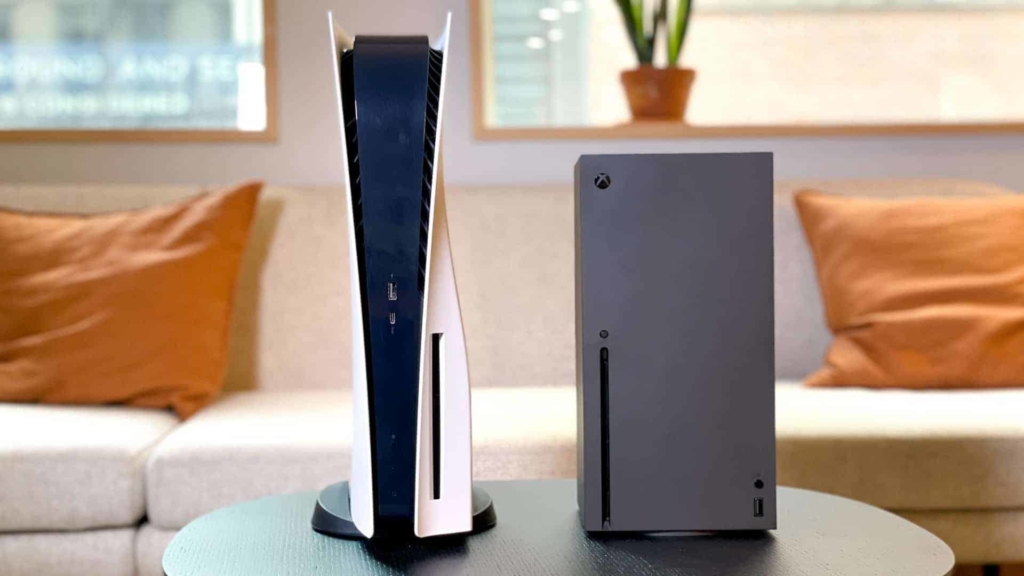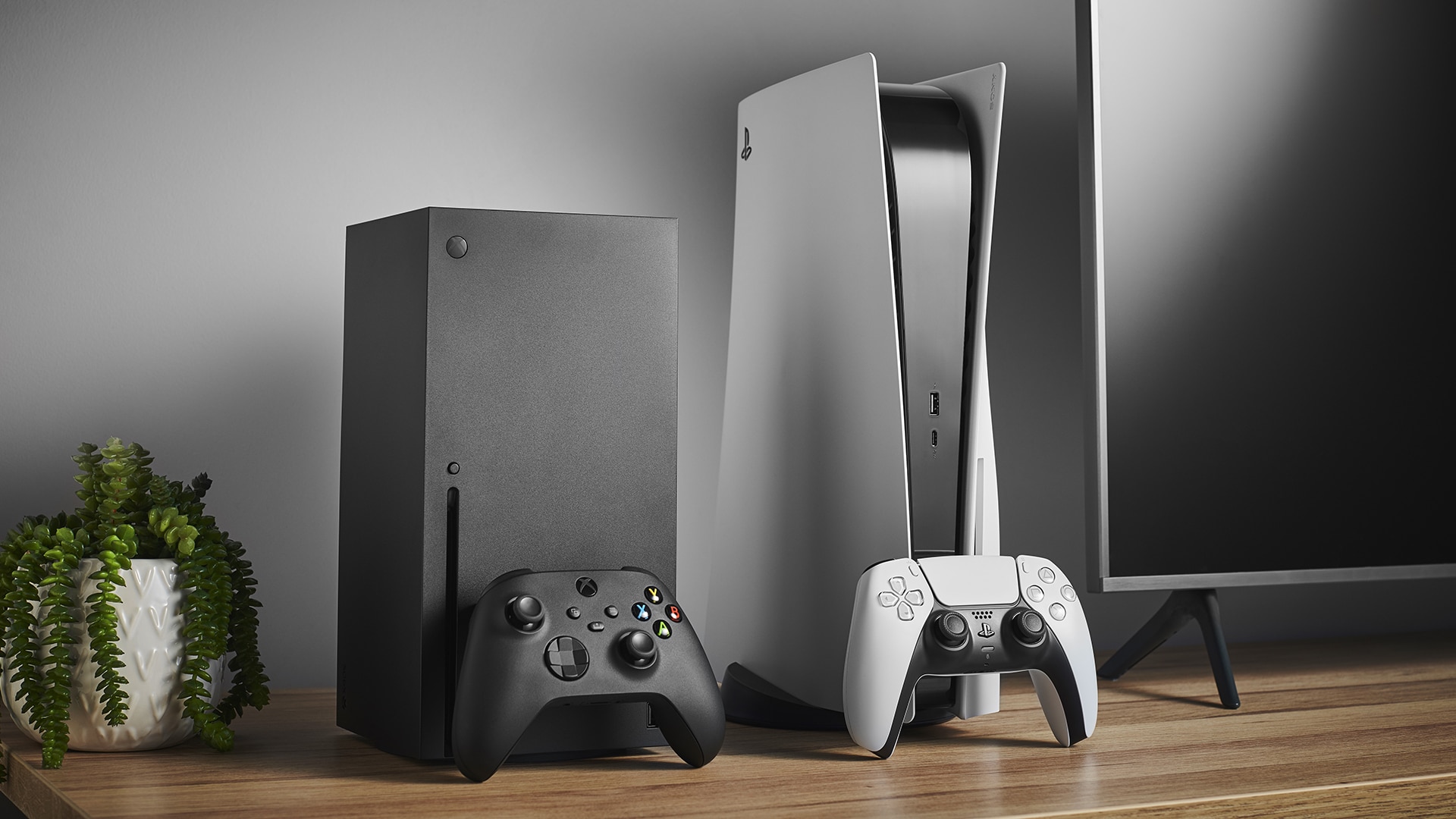Are the PS5 and Xbox Series X the End of Gaming Consoles?
With the PlayStation 5 and Xbox Series X launch comes a new generation of gaming experience and development opportunities in the industry. Game publishers and hardware creators alike are taking Xbox and Playstation’s lead and bringing the latest cutting-edge technology to the forefront of gaming. Through popular consoles like the Series X and PS5, the latest features like raytracing, DLSS, and 8K gaming have gone from dreams of the future to something totally accessible to those with the budget and passion for it. Despite the recent stock shortages for both machines, there’s no doubt they’ll continue to increase in circulation along with the mountain of new game releases slated for 2021 with the same next-gen capabilities.
Both of these consoles are hot commodities right now, and whether you’re a ride or die PS fan or a lifelong Xbox user, you want to get your hands on one of these consoles. They are both miles ahead of their previous counterparts in terms of style, peripherals, and internal build. We’ll go through their incredible specs and features in brief and answer the real question of whether the Xbox Series X and PlayStation 5 are the ultimate destinations for gaming consoles.
Why are PlayStation 5 and Xbox Series X the Ultimate Consoles?
Both the PS5 and Xbox Series X have an array of showstopping features to make any gamer’s mouth water. At first glance, these consoles are almost unrecognisable compared to previous generations like the PS3 or Xbox 360 — which were the height of popular gaming tech from 2005 onwards. With the promise of 3-D audio technology, incredible SSD options, hardware ray tracing, and the DualSense haptic feedback of the PlayStation 5‘s latest controller, these seem to be the most advanced consoles this decade could offer the market. Old features like standard ‘rumble’ are totally unimpressive to users now, and ease-of-use capabilities like quick-resume are an expected performance standard. The Series X/S even trumps this with instant switching between different games with an effortless transition, something unimaginable for old N64 generations, for example.

The advancements are somewhat less impressive when you narrow the gap between generations, though. The Xbox One X and the Xbox Series X aren’t all that incomparable when you look at the specs. The PS4 Pro and One X already had capabilities implemented for 4K HDR viewing, and both were backwards compatible with older games, for the large part. Even the user interfaces haven’t changed too much — call it continuity and brand recognition, but this generation of consoles share a lot with their predecessors. The jump in revolutionary features has decreased, and the next-generation is seeming more like the final generation.
“The console as we know it historically, a single proprietary machine that plays content specific to it, is most definitely on its way out.”
Center for the History of Video Games and Critical Play
Has Console Gaming Peaked?
Previously we’ve heard industry concerns that the dawn of VR and cloud gaming would be the end of consoles. The previously short lifespan of consoles has seemingly held this off, though. Consumers learnt to expect a new iteration every 4 or 5 years that would make gaming better in some way and by some degree. There’s no denying the PS5 and Series X have done this with super-speedy load times. Microsoft has developed Smart Delivery to ensure your game library works across generations — where supported by the game, of course. And, let’s not forget, the dawn of cross-platform play. However, they’ve also outdone themselves to a possibly unbeatable extent. This generation of the console may have the longest lifespan of any other previous console in existence. It offers the unique ability to expand and update to the small increments of improvements that each year brings. The Xbox Seagate Drive is an example of this built-in ability to last longer, and expand along with the industry, as is the digital aspect to game downloads and online play. The improvements that we see in coming years will likely come in the form of updates or purchasable proprietary components.
The codirectors of the Center for the History of Video Games and Critical Play put this concept best when they said, “The console as we know it historically, a single proprietary machine that plays content specific to it, is most definitely on its way out.”
What’s the Future of Console Gaming Look Like?
Looking maybe eight to ten years into the future, it would be easy to imagine the Xbox Series X and PlayStation 5 consoles, bought in 202,1 still being the main feature in gamers’ setups. And why not? They have 8K, raytracing, memory expansion, and digital download capabilities galore. Nothing is stopping Xbox and PlayStation from simply bringing out downloadable software updates to enable new abilities or even offering more physical component add-ons like the Xbox Seagate drive. The view of the future of consoles starts to look a lot like the future of PC gaming.
In fact, it’s not impossible to imagine console software becoming downloadable. Users might build their own rig to their preferred specs and download their chosen console software to access the user interface and content. This would be a gamechanger for the console industry, but perhaps a little far off in Microsoft and PlayStation’s plans right now.
Nevertheless, if you manage to get hold of a coveted Xbox Series X or PlayStation 5 any time soon, you can be certain that your console will last longer than the consoles of past generations.

